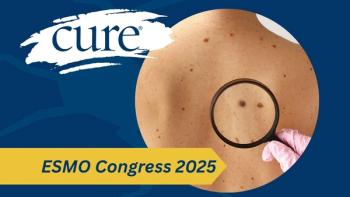GigaPath, an artificial intelligence (AI) model, may predict cancer mutations including those in lung and other cancers, as presented during the 2024 ESMO Congress.
Findings from the study presented at the meeting demonstrated that the use of GigaPath was better in predicting genetic mutations in lung adenocarcinoma compared with other AI approaches currently available for this purpose. This model also outperformed other methods regarding the identification of five genes for pan-cancer.
Study Highlights:
- GigaPath, an AI model, outperforms other AI approaches in predicting genetic mutations in lung adenocarcinoma and identifying genes for pan-cancer.
- GigaPath can accurately predict tumor mutation burden, a crucial biomarker for determining treatment response.
- GigaPath is a foundation model trained on a massive dataset of 1.3 billion images from 28 cancer centers.
- AI has the potential to revolutionize digital pathology, but its impact has been limited due to the limitations of traditional image analysis techniques.
Results from the study also suggested that GigaPath was able to predict tumor mutation between than what was called a second-best method, as discussed by Dr. Carlo B. Bifulco, medical director of oncological molecular pathology and pathology informatics at the Providence Oregon Regional Laboratory and CMO of Providence Genomics, during the presentation.
In the abstract, GigaPath is explained as an AI foundation model that is pretrained on a large dataset from 28 cancer centers. Of note, this dataset consisted of 1.3 billion images from over 170,000 biopsy slides in more than 30,000 patients with 31 major tissue types. AI is trained by inputting a large set of information, which allows the system to learn what it needs to identify.
In the study, researchers aimed to compare GigaPath with other competing AI models across pan-cancer 5-gene, lung adeno 5-gene (EGFR, FAT1, KRAS, TP53, LRP1B) and tumor mutation burden prediction. Tumor mutation burden refers to the number of genetic mutations found in the DNA of cancer cells. In other words, it is a biomarker that can help determine how well patients may respond to treatments like immunotherapy.
Digital pathology has been used in the space for nearly 20 years, Bifulco said, and AI has already played a role. Despite its use and some Food and Drug Administration-approved algorithms in this setting, the impact of this has been relatively limited.
“There’s a watershed event in AI, … and unless you’re living in a cave, I think we’ve all been affected by this,” Bifulco said.
He added that there is a way to integrate AI into the pathology and biology space, and some of that information has already been published.
“Everything [that] has been published so far has been based either on classical image analysis or what we call convolutional neural networks, CNNs,” Bifulco said. “The way these networks work, they have [a] representation of features of the image, like angles that, again, get abstracts at higher levels until they enable you to actually reach a conclusion about the image. And those methods are very powerful, and they’ve been used for many applications, but they’re very brittle.”
He added that the reason why these networks have not been applied more broadly is because they depend on the characteristics of the dataset, which can lead to it generalizing the information poorly. Bifulco said that we are currently leaning lessons from the AI text language space.
“The underlying concepts are really about the prediction of the next word in the sentence,” he explained. “These models are trained by trying to make a prediction of something. They don’t require any kind of labels. You don’t need to instruct them to learn from the text itself, which makes them incredibly powerful, given the amount of huge, huge amount of texts that are available.”
He added that AI text language models are able to predict the word based on the context of a given sentence, and how the context of the sentence drives the interpretation of what the AI model is deciphering. This type of learning can also be applied to images.
“Fundamentally, we are trying to predict a patch of the slide with cells based on the context of the surrounding slides,” Bifulco said. “You don't need to tell anything to the machine learning algorithm about the slides they're looking at. They're learning those features, those fundamental features, foundation models. That's where the name comes from, from the images themselves, and that enables them to scale and to be very robust and reliant across different applications.”
He noted that the images that the model works with need to be large. “The size of the model is going to be a key factor for our ability to actually perform as well as we would like to,” Bifulco said.
In addition, he explained that training the model involves the whole pathology slide, and since they are gigapixel slides, they are very large.
“There’s additional training necessary to embed all the features of the whole slide that you’re looking at under the microscope,” Bifulco said. “And as you can see, we reach the billion-parameters level.”
Training the GigaPath model also involved embedding multiple sources of information including genomic data, language via text from pathology reports, and text from clinical reports.
Even though GigaPath is being tested in this area, Bifulco said that there are many other models coming that are integrating several technologies. For example, these models may have the ability to train with different sources of images (CT scans, MRIs, ultrasound, pathology), in addition to the ability to interact with models with text, similar to an AI chat prompt.
“Currently, those are potentially deployed on phones, on little devices, but you can see that in the future, very likely, you will have a multimodal kind of integration, where you interact by voice, very likely, with the whole comprehensive data set of the patient,” Bifilco said.
For more news on cancer updates, research and education, don’t forget to subscribe to CURE®’s newsletters here.






